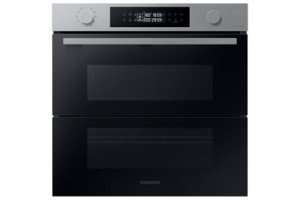The Comprehensive Guide to Built-in Electric Ovens and Hobs
In today's fast-paced world, modern-day kitchen appliances have evolved drastically to cater to the tastes and needs of modern house owners. Among built in double oven and hob packages , built-in electric ovens and hobs stand apart for their effectiveness, style, and functionality. This post explores the features, advantages, setup suggestions, and upkeep of built-in electric ovens and hobs, along with dealing with often asked concerns.
Understanding Built-in Electric Ovens
What Is a Built-in Electric Oven?
A built-in electric oven is a home appliance developed to be set up into a wall or kitchen cabinetry, offering a smooth, integrated look in the kitchen. Unlike freestanding ovens, built-in models save space and typically come equipped with additional features such as self-cleaning cycles, convection cooking, and different cooking modes.
Types of Built-in Electric Ovens
- Single Ovens: Ideal for smaller cooking areas or those who cook for less individuals.
- Double Ovens: Offer more cooking area, suitable for bigger families or those who captivate regularly.
- Mix Ovens: These include both a standard oven and a microwave, providing versatile cooking choices.
Benefits of Built-in Electric Ovens
| Advantage | Description |
|---|---|
| Space-Saving Design | Fits seamlessly into cabinetry, maximizing counter space. |
| Enhanced Aesthetics | Produces a contemporary, expert kitchen appearance. |
| Versatile Cooking Options | Typically features several cooking modes including bake, broil, and convection. |
| Energy Efficient | Takes in less energy than standard ovens. |
Understanding Built-in Hobs
What Is a Built-in Hob?
A built-in hob is a cooking surface set up into the kitchen countertop, incorporating effortlessly with the kitchen design. Available in electric, induction, and gas varieties, electric hobs are renowned for their accuracy and ease of use.
Kinds Of Built-in Hobs
- Electric Hobs: Traditional coil components that heat by means of electrical resistance.
- Induction Hobs: Use magnetic energy to heat only the pots and pans, making them faster and safer.
- Ceramic Hobs: Feature a smooth surface area with convected heat beneath, offering simple cleaning.
Advantages of Built-in Hobs
| Advantage | Description |
|---|---|
| Fast Cooking Times | Electric hobs heat rapidly, lowering overall cooking time. |
| Easy to Clean | Flat surface permits quick and uncomplicated cleaning. |
| Long lasting | Typically built to last and withstand heats. |
| Versatile Compatibility | Functions well with various cookware materials. |
Setup Considerations
Setting up a built-in electric oven and hob needs mindful preparation.
Steps for Installation
- Measure the Space: Ensure the measurements of the oven and hob match the allocated area in your kitchen.
- Check Electrical Requirements: Consult an electrical contractor to make sure wiring can handle the appliance's power requirements.
- Placement of Appliances: Position the oven at a convenient height, typically in between waist and eye level.
- Ventilation: Ensure proper ventilation, especially if your oven integrates a range hood.
Vital Tools
- Power drill
- Screwdrivers
- Level
- Measuring tape
Security Precautions
- Always detach the power before setup.
- Follow producer instructions carefully.
- Think about hiring an expert for electrical connections.
Maintenance Tips
Keeping built-in electric ovens and hobs is important for longevity and efficiency.
Routine Care Routine
- Cleaning the Surface: Use a soft fabric and manufacturer-recommended cleaner.
- Inspecting Electrical Connections: Check cords and plug for damages regularly.
- Cleaning up Filters: If the oven has a ventilator, tidy or change the filters as required.
Troubleshooting Common Issues
| Issue | Possible Solution |
|---|---|
| Oven Won't Heat | Check the power supply and heating component. |
| Heating Inconsistency | Examine the thermostat and oven calibration. |
| Hob Not Heating | Guarantee cookware is suitable and inspect the power supply. |
Frequently Asked Questions
1. How do I select the right size built-in electric oven?
Picking the best size involves determining your kitchen area and considering how much cooking you usually do. If you captivate often or have a large household, select a double oven.
2. Are built-in electric hobs safe to utilize?
Yes, built-in electric hobs are safe, particularly induction hobs which just heat up the pots and pans, lowering the danger of burns.
3. Can I set up a built-in oven and hob myself?
While it is possible for skilled DIY enthusiasts, employing an expert is recommended, especially for the electrical connections.
4. How typically should I clean my built-in oven and hob?
Cleaning must be done frequently after usage, with deep cleaning periods depending on cooking frequency - generally every couple of months.
5. Do built-in appliances need unique upkeep?
Built-in appliances require similar upkeep to freestanding models, however appropriate care needs to be taken with their surrounding cabinetry.
Built-in electric ovens and hobs present a combination of technology and design, providing effectiveness and contemporary aesthetics to any kitchen. With appropriate choice, careful installation, and regular upkeep, these appliances can improve one's cooking experience for lots of years. Comprehending the functions, benefits, and care requirements can empower homeowners to create the kitchen of their dreams-- effectively and stylishly.
As cooking areas continue to develop into central hubs of the home, choosing the best built-in options plays a crucial function in everyday culinary creativity and enjoyment.

